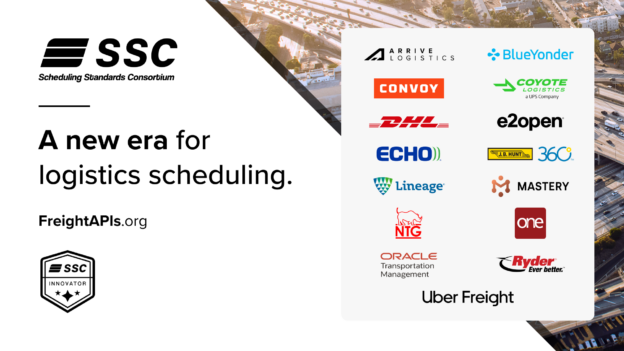The future of communication in freight and logistics: examining APIs and the potential for improvement
Industry Insights, Tech & Visibility • Published on August 24, 2023
When it comes to communicating in the freight and logistics industry, Electronic Data Interchange (EDI) has long been the established method. However, as we look closer at communication protocols and modern API technologies, it becomes evident that there are nuanced considerations to explore. While modern web APIs offer significant flexibility and advantages, the absence of established standards for communicating about freight requires us to examine the need for similar standardization efforts that have benefited EDI over the preceding decades. By learning and building on the experiences and lessons from decades of work on EDI, we can unlock the potential from recent advancements in web development for the logistics industry.
EDI revolutionized communication by providing a standardized format for data exchange and reducing errors associated with traditional methods like mail and faxes. By defining standardized message formats and communication protocols, EDI enabled consistent communication between participants, akin to a common language that everyone understands. This standardization was achieved through collaboration among industry players seeking more reliable and efficient ways to communicate.
Modern web APIs have more recently revolutionized the tech industry by also making it possible for different organizations to easily and efficiently communicate with one another. Unlike EDI, web APIs are often designed and implemented by a particular company to suit their needs and then made publicly available for anyone to use as they see fit. Implementers have the freedom to choose from various API protocols and define message formats, affording them flexibility and customization options. This flexibility is advantageous for implementing solutions quickly and leveraging a vast ecosystem of tools and expertise.
Modern web APIs have more recently revolutionized the tech industry by also making it possible for different organizations to easily and efficiently communicate with one another. Unlike EDI, web APIs are often designed and implemented by a particular company to suit their needs and then made publicly available for anyone to use as they see fit. Implementers have the freedom to choose from various API protocols and define message formats, affording them flexibility and customization options. This flexibility is advantageous for implementing solutions quickly and leveraging a vast ecosystem of tools and expertise.
Companies such as Project44 and Fourkites provide innovation in the form of location data aggregation and normalization across various sources, and this data is made accessible by API. Tech-forward companies like Convoy are able to easily integrate with these APIs to provide seamless experiences and valuable insights to our shippers about the locations of their shipments at any given time.
A common, valid criticism of APIs replacing EDI is that there is no established standard for how different companies should communicate via APIs. The lack of a common language would hinder seamless communication and lead to an explosion of bespoke interactions which would be a large step backwards towards the pre-EDI world.
However, it’s crucial to note that APIs can be defined using standardized communication protocols. One approach could be to define APIs that adhere to existing EDI message standards. Alternatively, they can be used to define a completely new set of standards that may offer improvements over current EDI practices. An example of this is the FreightAPIs effort, which aims to establish new standards using modern technologies, starting with scheduling APIs.
With this context in mind, it becomes essential to address the core questions:
- What advantages do modern web-based APIs offer over EDI? APIs provide flexibility, customization, and the ability to leverage a vast ecosystem of tools and expertise. They enable rapid development and deployment of new features and products, supporting innovation and growth. By utilizing standardized communication protocols within the API framework, industry players can ensure compatibility, scalability, and seamless integration.
- Do the EDI message standards need to be replaced with something new? The answer to this question is not straightforward. While EDI has served as the backbone of communication in the freight and logistics industry, it is not without its limitations. The fragmented landscape of EDI, with different versions and methods of communication, has resulted in significant challenges for integration and interoperability. APIs offer the potential to not only simplify adoption, but enable usage in domains previously inaccessible to EDI such as mobile applications and more. However, while APIs have a lot of benefits, the decision to replace EDI entirely requires careful consideration so that we can build on the foundation laid down by EDI.
In conclusion, the future of communication in freight and logistics lies in finding the right balance between leveraging the advantages of APIs and addressing the challenges presented by the current state of EDI. APIs offer flexibility, innovation, and compatibility with modern technologies. Simultaneously, the industry needs to explore opportunities for standardization within the API framework, leveraging the lessons learned from EDI to ensure seamless and efficient communication.
By engaging in a thoughtful conversation about the improvements needed within the existing EDI landscape, we can collectively work toward leveraging modern communication protocols, defining and adopting industry-wide standards, and shaping the future of communication in the freight and logistics industry for the better.



